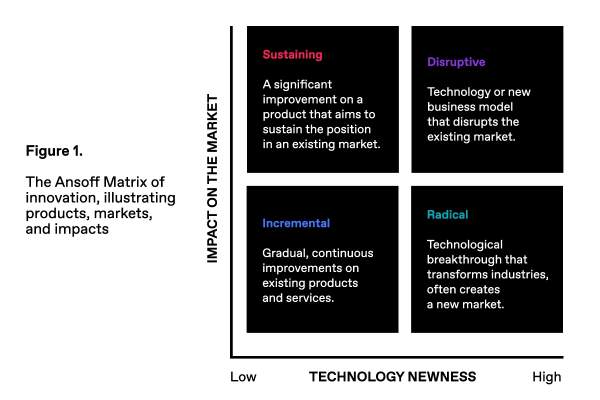How to assess innovation readiness
Recognizing the need for innovation readiness is the starting point, but how do you go about assessing it? Assessing innovation readiness is like plotting a course for an adventurous journey. It's a path that takes you from where you are to where you aim to be in the world of innovation. Below, we'll outline a step-by-step guide to navigate this new terrain.
1. Understand your current state
Understanding your starting point is the first step of any journey. This phase is all about looking inward and evaluating where your organization currently stands in terms of innovation, culture, and competitiveness:
Analyze existing processes: Begin by scrutinizing your current operations. What are your existing processes, strengths, and weaknesses? How does your organization approach innovation today?
Evaluate culture and mindset: The culture within a company can make or break innovation. Assess the mindset of your team, their openness to new ideas, and the overall attitude toward change. This is largely dependent on incentives, motivations, and psychological safety.
Benchmark against competitors: Where do you stand in comparison to your industry peers? Understanding this context can shed light on your current innovation positioning.
2. Identify opportunities and gaps
Once you have a clear picture of your current state, the next step is to point where you want to go. This involves identifying the areas ripe for innovation and recognizing the gaps needing to be addressed:
Spot areas for improvement: What aspects of your organization could benefit from innovation? Identifying these opportunities can guide where to focus your innovation efforts.
Recognize talent and resources: Determine if you have the necessary resources, including the right people with the right skills, mindsets, and behaviors to drive innovation.
Understand constraints: Recognize the constraints holding you back, such as budget, technology, or regulatory barriers. Acknowledging these upfront can save time and frustration later.
3. Implement strategies
With a clear understanding of where you are and where you want to be, it's time to chart the path forward. This phase involves crafting strategies tailored to your unique needs—setting the stage for innovation success:
Define clear objectives: Set measurable and achievable innovation goals that align with your organization's broader strategy.
Create tailored strategies: Develop bespoke strategies that take into account your specific strengths, weaknesses, opportunities, and threats. Copying pages from competitors’ playbooks won’t yield the results you want.
Build an innovation team: Consider forming a team or committee dedicated to innovation to ensure a continual focus and drive.
4. Measure and monitor
The journey of innovation doesn't end with the implementation of strategies; it requires constant vigilance. This phase emphasizes tracking your progress, adapting to changes, and embracing both successes and failures as learning opportunities:
Establish metrics: What gets measured gets managed. Create clear, relevant metrics enabling you to track progress and success in innovation.
Regularly review progress: Innovation is a dynamic process. Regularly review and adapt your strategies based on real-world feedback and results.
Celebrate successes and learn from failures: Promote a culture that not only celebrates successes but also expects and learns from failures. Both are valuable in the innovation journey.
5. Engage with external experts (optional)
Sometimes, the road to innovation requires guidance from seasoned travelers. This optional phase considers engaging external experts, like TXI, who can provide fresh insights and objectivity to supercharge your innovation journey.
It’s time to go. Are your bags packed?
Embracing innovation organization wide is the only viable choice for those organizations that hope to stay relevant in the coming years. But again: getting from here to consistent innovation is a journey––of culture, organizational structure, technology, and mindset. How ready is your organization to start that journey? How ready are you to innovate?
Assessing innovation readiness is more than a tick-box exercise; it's a strategic endeavor requiring deep insight, planning, and execution. By following this roadmap, mid-size companies can place themselves on the path to not just embrace innovation but lead it. In a world that never stops changing, being ready to innovate isn't an option; it's an organizational imperative.
At TXI, we don't just theorize about innovation; we make it happen. If you’re considering a partnership that will help build a culture of innovation to develop widely adopted, valuable technology and software, we'd love to discuss how we can work together. The future is calling; let's answer with pragmatic innovation.





